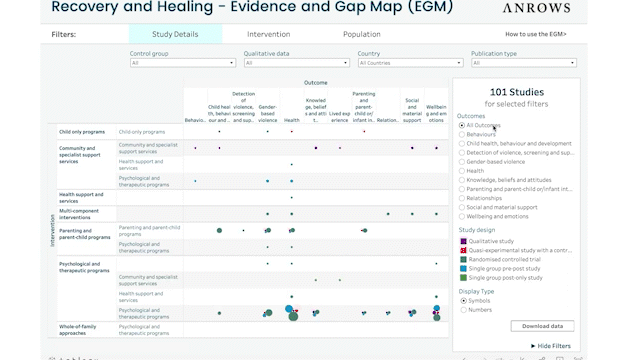 Skip to content
Skip to content
The Evidence and Gap Map provides a visual overview of the available evidence and gaps in the knowledge base. The maps show how much (or little) evidence exists, not whether the interventions studied were effective. For effectiveness and other details, see our Intervention Reviews.

Hovering over the top of the intervention column will bring up + and – buttons which will allow you to drill in and out of the categories on each axis:

When viewing the details of studies, you can click on active DOI links to take you directly to the journal or publication page:

You can view the full list or click on “View Single Study”:

Our four EGMs broadly align to the domains of Australia’s National Plan to End Violence against Women and Children 2022–2032: prevention, early intervention, response, and recovery and healing.
The EGMs plot intervention categories along the vertical axis and outcome categories on the horizontal axis. The contents of each cell are represented by bubbles according to different study designs. The size of the bubble is proportional to the number of studies. Likewise, the absence of bubbles represents gaps in knowledge.
We have also added filters so that you can view the evidence according to characteristics most relevant for your specific purposes, including population, geographical location and study methods. By clicking into the bubbles you can access more detailed information about the studies. The resulting interactive matrix allows you to quickly understand and access a large and complex evidence base.
To learn how the EGMs are created, please see our Methodology Report.